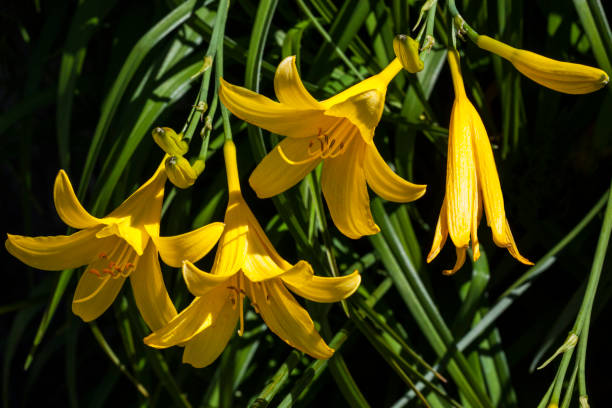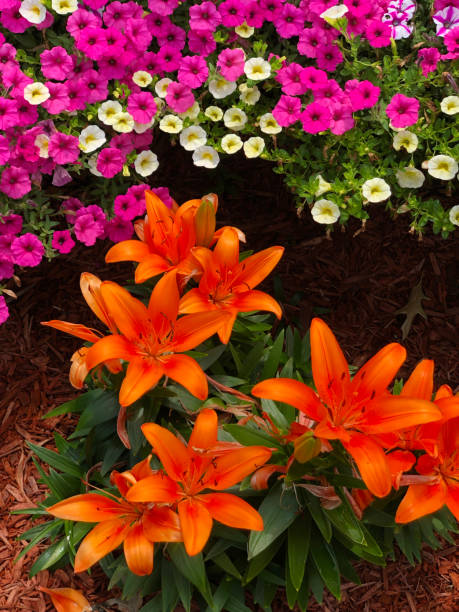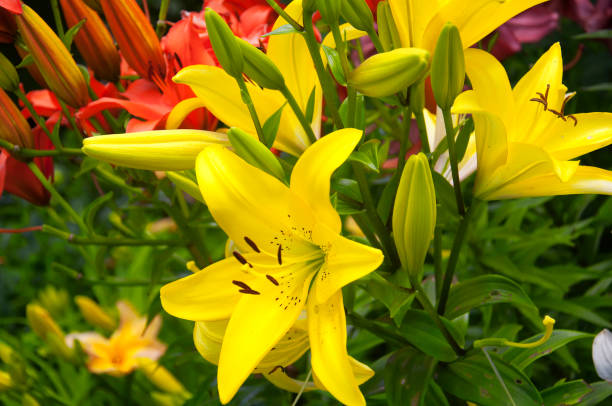The Ultimate Guide To Growing And Taking Care of Your Daylilies: Great Steps That Will Make It Easy For You!
Daylilies are one of the popular flowers that are grown in home gardens. They are easy to grow, and you don’t need a lot of maintenance to take care of them. Propagating daylilies from seeds can be rewarding, but it requires patience and time. However, there are things you should be cautious about to take care of them properly. Here we have put together a guide on taking care of daylilies so you can enjoy them longer.
Table of Contents
Growing Requirements

Sunlight
Daylilies require direct sunlight, so ensure that yours receives at least six hours per day. Some afternoon shade will help keep yours healthy in a particularly hot climate. However, putting in the shady areas may result in fewer blooms.
Soil
While daylilies thrive in any soil type, they prefer fertile, loamy soil. Ensure that the soil is sufficiently moist. Sandy or clay soils may be excessively dry. Composting it can aid in moisture retention. Mix in compost before planting.
Daylilies thrive in a fairly wide pH range. They flower best in moderately acidic to alkaline soil with a pH of 6.0 to 8.0. The pH of the majority of garden soils is between 6.0 and 7.0.
To measure soil acidity or alkalinity, soil pH uses a scale ranging from 1-14, with 7 being the neutral point. On the other hand, soil acidity is indicated by readings below 7, while soil alkalinity is indicated by readings above 7. A soil pH test is excellent if you have any doubts about the suitability of your soil for growing Daylilies. A soil pH tester probe can be used to determine the pH of your soil quickly. Pelletized limestone can be used in the soil to raise the pH (make it more alkaline). Soil sulfur, aluminum sulfate, or chelated iron can all be used to lower the pH. Soil acidity can be increased and maintained by using organic compost or mulching with compost.
Water
Daylilies like soil that is moist but well-drained. When they are established, they can go without water for a while, but they need wet soil when they start growing. Even though daylilies look good in many places, their roots can rot if they are always in the water. Then, be careful not to over-water your plants!
After Planting
Immediately after planting, soak the soil in the area where you’re going to plant at least 6 inches down with a garden hose. Root Stimulator can be used to give plants a little extra help when they’re transplanted. This will help them grow stronger roots, which will help them be less stressed when they’re moved and make them grow more quickly.
The Earliest Stages of the Plant’s Growth
Your newly planted Daylilies should not need to be watered every day in average garden soil. These conditions can lead to root rot and other diseases of the plants because of the saturated soil. You should only water your plants when the soil around the root ball is damp to moist if there isn’t enough rain. It’s much better to give your plants a good soak on fewer occasions rather than just a quick mist each day. Winter dormant plants, since they aren’t growing and evaporation is slower, require less water than actively growing plants. So, don’t overwater your plants in the winter!
Watering In Pots
Daylily plants are grown in pots, planters, and other containers, frequently requiring additional watering attention. After planting a daylily in a container, check the soil moisture daily with the finger test. Rehydrate the soil after the top inch or two has dried. After 1-2 weeks of daily testing, you should be able to determine how frequently your potted daylilies will require water. Potted plants will require increased attention to watering during the hot summer months. Potted daylilies require significantly less water during the cooler winter months.
Established Daylilies
Daylilies planted in garden beds are relatively drought tolerant once established. Plants will benefit from occasional deep soakings during extended periods of summer drought. If you notice wilting or discoloration of the foliage, check the soil moisture level and, if necessary, give plants a thorough soaking.
Through Irrigation
Setting your irrigation system’s timer to water in the early morning hours is preferable to watering in the late evening, which can cause the onset of fungal diseases and other foliage diseases in your lawn and garden. During the first few weeks, check soil moisture frequently and adjust irrigation time as needed to maintain a moist, rather than a constantly soggy or wet, soil environment.
Feeding
Daylilies can thrive in any reasonably fertile garden soil. But a little extra fertilizer can go a long way in improving the health of your plants. If you only fertilize your daylilies once a year, the time will coincide with the emergence of new top growth in the early spring. Each daylily clump needs a small amount of a general-purpose fertilizer, such as 5-10-10 or 10-10-10. It is not necessary to water in fertilizer in areas with regular rainfall. However, in some areas, watering the fertilizer can be of benefit.
After the daylilies have finished blooming, fertilize them again if you have the time and resources. This will boost your plants to grow more quickly and produce better blooms in the future.

Dividing Overgrown Clumps
Today’s daylily cultivars will gradually lose bloom quantity and quality after four years or more of undivided growth. In other words, they want to be divided. Dig up and divide the overgrown clump whenever a daylily’s performance declines. If the clumps are large, daylily division is simple but requires muscle. Do it right after the daylily blooms when the soil is workable.
How to divide daylilies? It’s possible to dig out one half of a small clump by simply dividing it in half with a shovel. Ideally, dig out the clump and then divide it up.
Grab a shovel and a tarp if you decide to dig the whole clump out! Shake off the soil from the clump (this is much easier to do if the soil is dry at the time). This will help you to divide the clump into single fans more easily. Washing the soil off isn’t necessary or recommended if you’re splitting the clump.
Dividing the clump into smaller pieces on your tarp with a shovel or a knife. Slicing the crown is unavoidable. Healthy new plants will grow from damaged daylily crowns, proving their regenerative and recuperative abilities. If you want your new plants to bloom the following year, leave three or four fans in each division. If divided into one fan division, the plant will not be damaged to fill a large area. Growing into showy clumps will take time. Discard the old center of the daylily clump. You have plenty of new, healthy divisions to work with now. Extra plants can be given away to friends.
Plant your new daylily divisions immediately. Most likely, you’ll have more than can fit. Hopefully, you thought ahead and planned where to plant them! The crown should be one inch below the soil line.

Deadheading
Your daylilies will put their energy into producing more flowers due to deadheading, which will result in a longer display of form and color in your garden. When the flowers have died, daylilies look their best. However, in most cases, the spent blossoms will fall from the stalk in just a few days. Many spent flowers on big-flowered daylilies can make the plant look a little messy, so many people cut off the spent flowers as they walk around and look at the plants. A scape can be cut down to the ground when all the flowers bloom on it. In the fall, you will have to cut back the whole plant.
Older daylily cultivars and some newer ones are very fertile and quickly set seed pods as a result of wind or insect pollination. Some seedlings may grow up around the original plant if these seed pods are allowed to mature and spread their seeds all over and around the clump. Seedlings can grow and bloom, but their flowers will not look like the original parent plant. These plants are seedlings of your original daylily, and if you didn’t know that, you might wonder if your daylily is changing its traits. It’s not true. Because daylilies are genetically stable, they aren’t as likely to spread as other perennials are, like some other plants. Do not keep these seedlings if you don’t want to. You can dig them out and throw them away. If you don’t want to deal with seedlings that come up on their own again, be sure to remove the seed pods.
Winter Care
Daylilies are one of the most admired flowering plants globally, and for a good reason. They are easy to care for, and their beautiful flowers will attract plenty of attention during the winter months. Here are some tips for winter care for daylilies:
- Mulch around the plants to keep the soil moist and warm.
- Make sure the plants have enough water but avoid over-watering.
- If temperatures drop below freezing, put the plants in a warm location (but not in direct sunlight) to keep them warm.
- Remove any dead leaves or branches to help ensure a healthy root system.
- Protect the plants from frost damage by covering them with a fabric cover or cage during cold weather.
